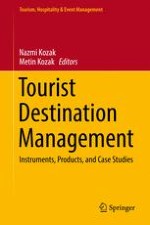2019 | OriginalPaper | Chapter
7. Food as a Component in Destination Marketing
Authors : Anna Stalmirska, Peter Whalley, Paul Fallon
Published in: Tourist Destination Management
Publisher: Springer International Publishing
Activate our intelligent search to find suitable subject content or patents.
Select sections of text to find matching patents with Artificial Intelligence. powered by
Select sections of text to find additional relevant content using AI-assisted search. powered by
